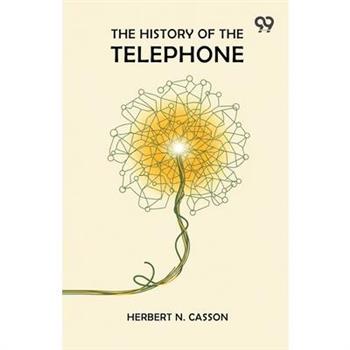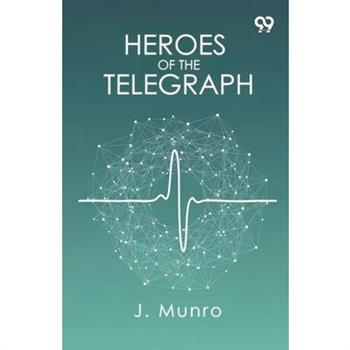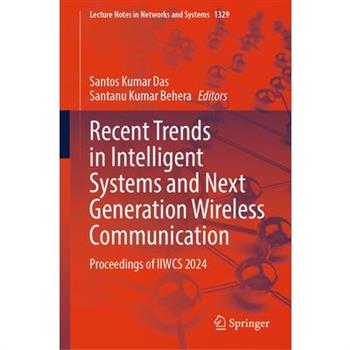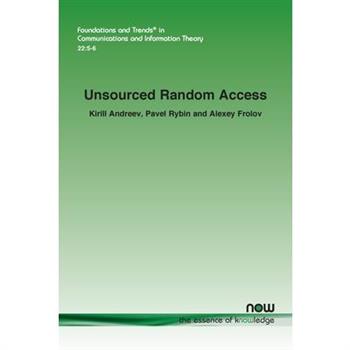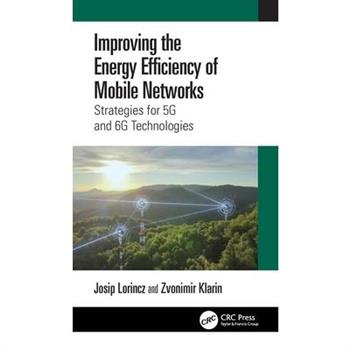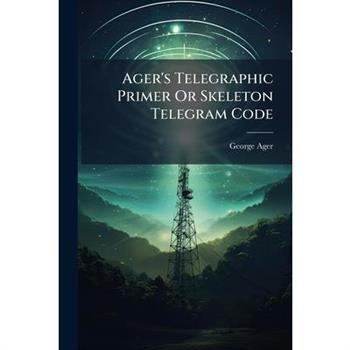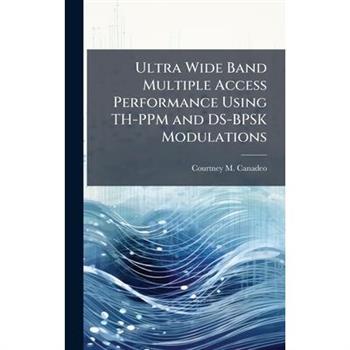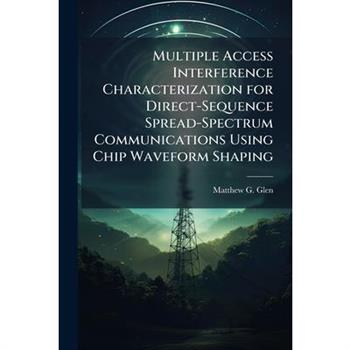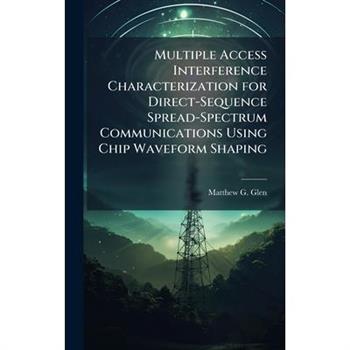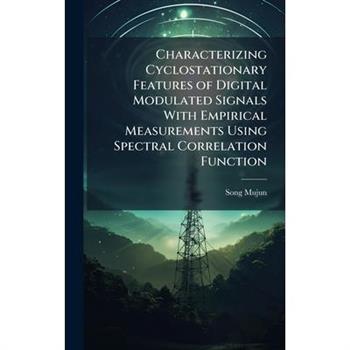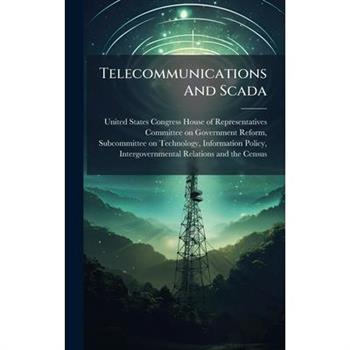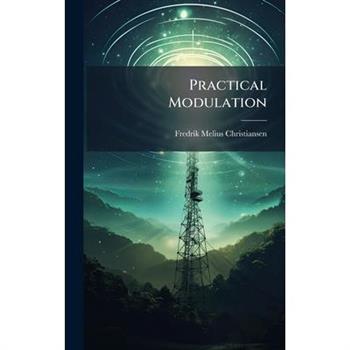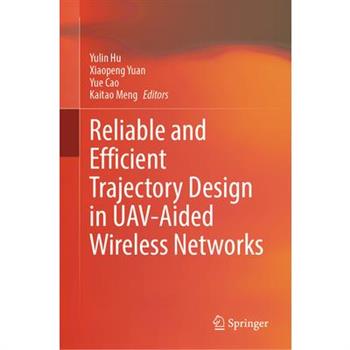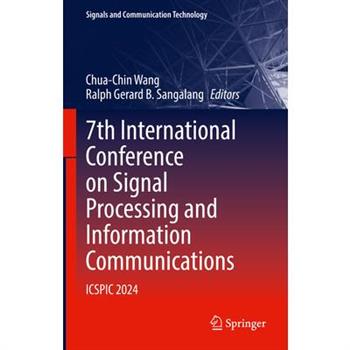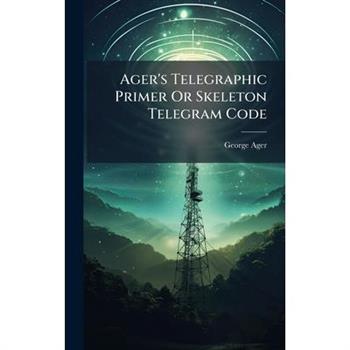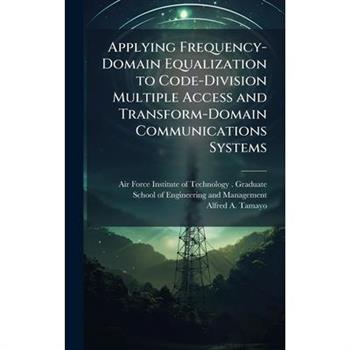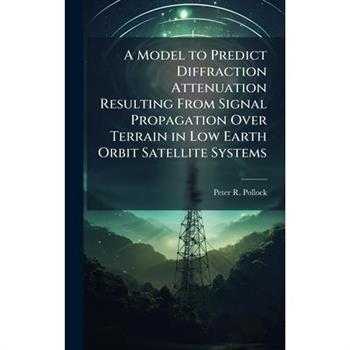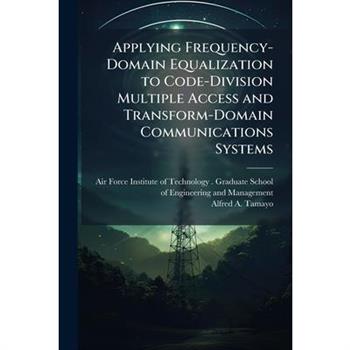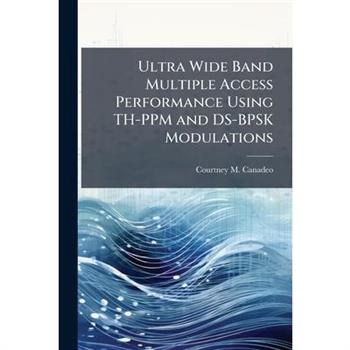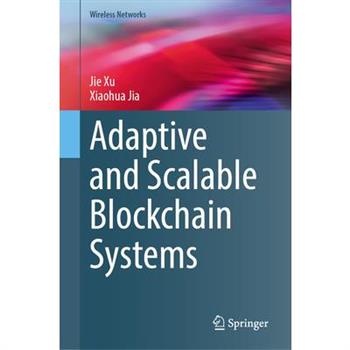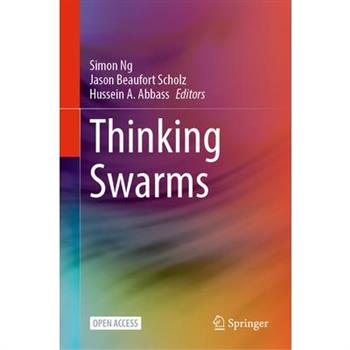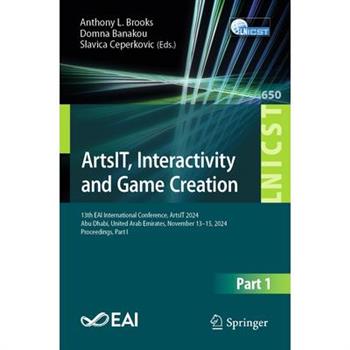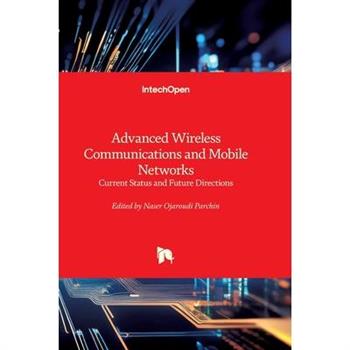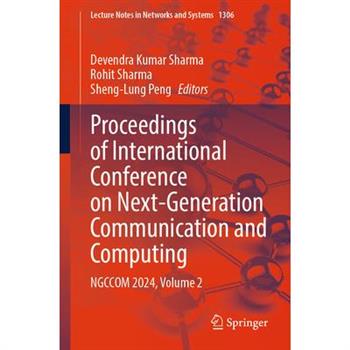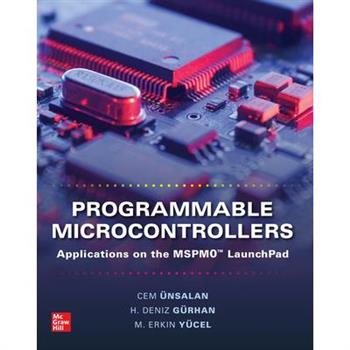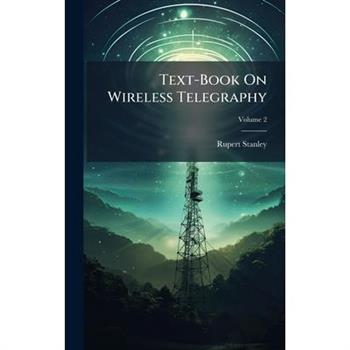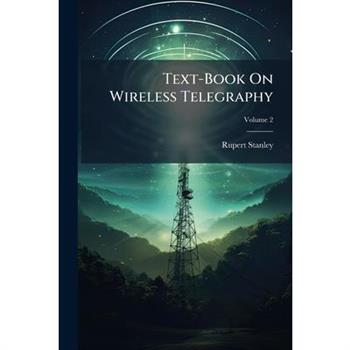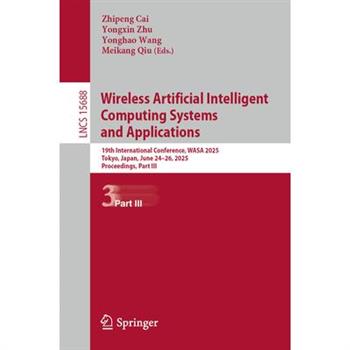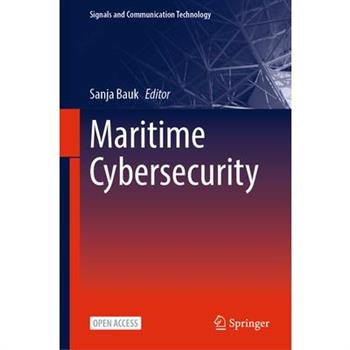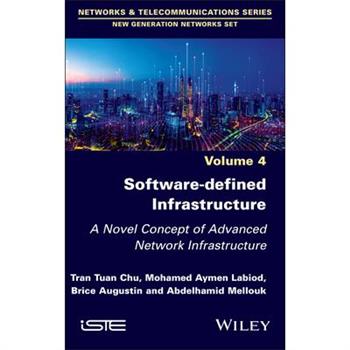Recent Trends in Intelligent Systems and Next Generation Wireless Communication
This book is a collection of cutting-edge research papers from the First National Conference on Intelligent Systems, IoT, and Wireless Communication for Society (IIWCS-2024). It features contributions from researchers and practitioners worldwide, sharing the latest findings in the fields of intelligent systems, the Internet of Things (IoT), and wireless communication. The volume covers novel techniques and methodologies in areas such as machine learning, 5G and beyond communication, RFID, MEMS, and VLSI engineering. The proceedings are a valuable resource for researchers, practitioners, and students interested in the latest developments in intelligent systems, IoT, and wireless communication.
Unsourced Random Access
Current wireless networks are designed to optimize spectral efficiency for human users, who typically require sustained connections for high-data-rate applications like file transfers and video streaming. However, these networks are increasingly inadequate for the emerging era of machine-type communications. Machine-type communications (MTC) dramatically change traffic patterns. Instead of focusing on peak data rates and low latencies, massive connectivity becomes a key requirement. The MTC concept involves a massive number of autonomous devices and sensors being connected to a gateway: a node (or a set of nodes) responsible for data collection. With a vast number of devices exhibiting sporadic traffic patterns consisting of short packets, the grant-based multiple access procedures utilized by existing networks lead to significant delays and inefficiencies. To address this issue, the unsourced random access (URA) paradigm has been proposed. This paradigm assumes the devices to share a common encoder thus simplifying the reception process by eliminating the identification procedure. The URA paradigm not only addresses the computational challenges but it also considers the random access (RA) as a coding problem, i.e., takes into account both medium access protocols and physical layer effects. This monograph provides a comprehensive overview of the URA problem in noisy channels, with the main task being to explain the major ideas rather than to list all existing solutions.
VHF Companion
A handy, splash-proof, on-the-water reference guide to every type of radio call, from Mayday to calling another boat or shore station. It also covers DSC, Pan Pan and other emergency calls. Heavily illustrated to make it easy to understand and follow.
India On Television ( Hb )
'Excellent...an incisive and much needed study of how television is changing India.' - Rajdeep Sardesai, Managing Editor, CNN-IBN and IBN-7More than fifty 24-hour news networks, operating in eleven different languages, emerged in India between 1992 and 2006. This book traces the evolution of satellite television and how it effected major changes in political culture, the state, and expressions of Indian nationhood. Explaining how television, a medium that developed in the industrial West, was adapted to suit Indian conditions, the book focuses specifically on the emergence of satellite news channels. It shows how live television used new forms of technology to plug into existing nodes of communication, which in turn led to the creation of a new visual language - national, regional and local - that altered politics and forms of identity formation in significant ways. Satellite television came to India as the representative of global capitalism in the early 1990s and crushed the governmental monopoly over broadcasting that had existed since independence. As such, the story of satellite news is also the story of India's encounter with the forces of globalisation. 'Accumulated with an insider's knowledge...a genuine contribution to the literature, bringing together valuable material that deserves a wide audience.' - Prof. Arvind Rajagopal, author of Politics After Television.
Improving the Energy Efficiency of Mobile Networks
This book provides analysis of the problem of high energy consumption of mobile networks and describes methods for improving the energy efficiency of mobile networks. It explores new technologies and strategies that will enable mobile networks to operate with less energy and become more sustainable while not compromising service quality.
The Great Adventure of the Optical Fiber
A fascinating adventure in the world of optical fibers and cables, suggested by two (passionate) experts in the field. Writing with 4 hands, with the Atlantic Ocean (and the optical fiber cable) in between...An exercise not always easy but guided by the same desire to 竄 transmit 罈 in an enjoyable way, through numerous illustrations with little but useful scientific explanations. The result is unusual, showing a real sharing pleasure between the authors.
Machine Learning for Wireless Communication
This book covers the basic principles of wireless communication while delving into the fundamentals of machine learning, including supervised and unsupervised learning, deep learning, and reinforcement learning. The authors provide real-world examples and case studies to illustrate the use of machine learning in wireless communication applications such as channel estimation, mobility prediction, resource allocation, and beamforming. This book is an essential resource for researchers, engineers, and students interested in understanding and applying machine learning techniques in the context of wireless communication systems.
Ager's Telegraphic Primer Or Skeleton Telegram Code
Ager's Telegraphic Primer Or Skeleton Telegram Code is a fascinating glimpse into the world of 19th-century telecommunications. This primer, authored by George Ager, provides a foundational understanding of telegraphic codes and their practical application. The book offers insights into the methods used to transmit messages quickly and efficiently across vast distances, predating modern digital communication. It highlights the ingenuity required to encode complex ideas into a simplified, standardized format for telegraphic transmission. This work serves as a valuable historical reference for those interested in the evolution of communication technology and the early days of electronic messaging.This work has been selected by scholars as being culturally important, and is part of the knowledge base of civilization as we know it. This work was reproduced from the original artifact, and remains as true to the original work as possible. Therefore, you will see the original copyright references, library stamps (as most of these works have been housed in our most important libraries around the world), and other notations in the work.This work is in the public domain in the United States of America, and possibly other nations. Within the United States, you may freely copy and distribute this work, as no entity (individual or corporate) has a copyright on the body of the work.As a reproduction of a historical artifact, this work may contain missing or blurred pages, poor pictures, errant marks, etc. Scholars believe, and we concur, that this work is important enough to be preserved, reproduced, and made generally available to the public. We appreciate your support of the preservation process, and thank you for being an important part of keeping this knowledge alive and relevant.
Digital Communications
The textbook covers digital communication systems, in both theory and application. The authors present a complete, up-to-date coverage on the principles of digital communications. The book covers a broad range of topics in digital communications, with emphasis on connecting fundamental concepts of digital signal and communication theory and offers the instructors a certain flexibility for teaching the course. The text covers signal analysis, probability and stochastic processes, analog-to-digital conversion techniques, modulation theory using stochastic processes, digital modulation spectra and probability of error, information and coding theory, and computer networks. Several examples and illustrations are included to help the reader develop an intuitive idea of the theory. In addition to acting as a core title for classes in digital communications, the book also can be included in classes in digital networks, information theory and coding, or digital modulation theory. Modulation theory is dealt with using stochastic processes, which remains a novel approach for undergraduate texts. The book is suitable for the undergraduate as well as the initial graduate levels of electrical, electronic or communications engineering courses. Presents comprehensive coverage of digital communication systems, in both theory and application; Includes a broad range of topics, with emphasis on connecting concepts of digital signal and communication theory; Features of suite of classroom materials for easy integration into existing and new courses.
Ultra Wide Band Multiple Access Performance Using TH-PPM and DS-BPSK Modulations
The increasing demand for portable, high data rate communications has focused much attention on wireless technology. Ultra Wide Band (UWB) waveforms have the ability to deliver megabits of information while maintaining low average power consumption. In accordance with recent FCC rulings, UWB systems are now allowed to operate in the unlicensed spectrum of 3.1 to 10.6 GHz, motivating renewed interest in the forty year old concept of impulse radio. Gaussian monocycles produce UWB waveforms occupying large bandwidths with multiple access (MA) capability enabled by spread spectrum techniques. Time Hopping (TH) and Direct Sequence (DS) modulations are considered here for UWB MA applications. This work extends Gold coding results and characterizes UWB performance using Simulated Annealing (SA) and Random Integer (RI) codes for TH and DS UWB applications. TH-PPM and DS-BPSK performance is evaluated using simulated probability of bit error Pb under MA interference (MAI), multipath interference (MPI), and narrow band interference (NBI) conditions for synchronous and asynchronous networks. Communication performance is validated for a single user operating over an AWGN channel and extended to incorporate MA capability.This work has been selected by scholars as being culturally important, and is part of the knowledge base of civilization as we know it. This work was reproduced from the original artifact, and remains as true to the original work as possible. Therefore, you will see the original copyright references, library stamps (as most of these works have been housed in our most important libraries around the world), and other notations in the work.This work is in the public domain in the United States of America, and possibly other nations. Within the United States, you may freely copy and distribute this work, as no entity (individual or corporate) has a copyright on the body of the work.As a reproduction of a historical artifact, this work may contain missing or blurred pages, poor pictures, errant marks, etc. Scholars believe, and we concur, that this work is important enough to be preserved, reproduced, and made generally available to the public. We appreciate your support of the preservation process, and thank you for being an important part of keeping this knowledge alive and relevant.
Characterizing Cyclostationary Features of Digital Modulated Signals With Empirical Measurements Using Spectral Correlation Function
Signal detection is widely used in many applications. Some examples include Cognitive Radio (CR) and military intelligence. CRs use signal detection to sense spectral occupancy. Without guaranteed signal detection, a CR cannot reliably perform its role. Similarly, signal detection is the first step for garnering an opponent's information. Wireless signal detection can be performed using many different techniques. Some of the most popular include matched filters, energy detectors (which use measurements such as the Power Spectral Density (PSD) of the signal), and Cyclostationary Feature Detectors (CFD). Among these techniques, CFD can be viewed as a compromise technique, in that it theoretically has better low Signal-to-Noise Ratio (SNR) detection performance than energy detectors and less strict requirements than matched filters. CFD uses the cyclostationarity of a signal to detect its presence. Signals that have cyclostationarity exhibit correlations between widely separated spectral components. Functions that describe this cyclostationarity include the Spectral Correlation Function (SCF). One advantage of cyclostationary approaches such as these is that Additive White Gaussian Noise (AWGN) is cancelled in these functions.This work has been selected by scholars as being culturally important, and is part of the knowledge base of civilization as we know it. This work was reproduced from the original artifact, and remains as true to the original work as possible. Therefore, you will see the original copyright references, library stamps (as most of these works have been housed in our most important libraries around the world), and other notations in the work.This work is in the public domain in the United States of America, and possibly other nations. Within the United States, you may freely copy and distribute this work, as no entity (individual or corporate) has a copyright on the body of the work.As a reproduction of a historical artifact, this work may contain missing or blurred pages, poor pictures, errant marks, etc. Scholars believe, and we concur, that this work is important enough to be preserved, reproduced, and made generally available to the public. We appreciate your support of the preservation process, and thank you for being an important part of keeping this knowledge alive and relevant.
A Model to Predict Diffraction Attenuation Resulting From Signal Propagation Over Terrain in Low Earth Orbit Satellite Systems
A critical issue for designers of communication systems is the characterization of the communication channel. The free-space propagation model does not adequately predict the mean path loss in space-to-ground communication systems. Traditional methods for predicting the effect of terrain impacting the path of propagating signals focus on statistical or empirical models, which can not always be extrapolated to model prevailing physical conditions. This study focuses instead on the development and application of knife-edge and rounded obstacle terrain models. The models are based on the geometric theory of diffraction and predict the attenuation affects due to diffraction caused by signal propagation over terrain.This work has been selected by scholars as being culturally important, and is part of the knowledge base of civilization as we know it. This work was reproduced from the original artifact, and remains as true to the original work as possible. Therefore, you will see the original copyright references, library stamps (as most of these works have been housed in our most important libraries around the world), and other notations in the work.This work is in the public domain in the United States of America, and possibly other nations. Within the United States, you may freely copy and distribute this work, as no entity (individual or corporate) has a copyright on the body of the work.As a reproduction of a historical artifact, this work may contain missing or blurred pages, poor pictures, errant marks, etc. Scholars believe, and we concur, that this work is important enough to be preserved, reproduced, and made generally available to the public. We appreciate your support of the preservation process, and thank you for being an important part of keeping this knowledge alive and relevant.
Multiple Access Interference Characterization for Direct-Sequence Spread-Spectrum Communications Using Chip Waveform Shaping
The modern world has an increasing demand for wireless multiple access communications; direct-sequence spread-spectrum multiple access (DS/SSMA) systems comprise many of these communication systems. A better understanding of multiple access interference (MAI) effects on DS/SSMA system performance, specifically their impact on overall system bit error rate (BER), enables system designers to minimize MAI degradation and produce greater DS/SSMA system capacity. This research characterizes MAI effects on DS/SSMA system performance through simulation in Matlab?, and explores the impact of multiple access code selection, chip waveform shaping, and multiple access code length on BER for both synchronous and asynchronous multiple access networks. In addition, the simulated DS/SSMA model permits rapid research into the effects of additional factors on BER. Prior to experimental testing, model validation is conducted through single user trials and by comparison with existing research for similar system designs. For synchronous and asynchronous networks, Gold coding improves BER by 7.5 and 4.0 dB, respectively, relative to aperiodic random spreading codes. Synchronous network results show that chip waveform shaping provides no significant BER improvement for the Blackman or Lanczos shapes. However, asynchronous network results show a potential BER improvement for Blackman and Lanczos shapes. Increasing code length from 31 to 511 resulted in a 7.5 dB BER improvement. Collectively, these results directly relate changes in BER to waveform cross-correlation statistics.This work has been selected by scholars as being culturally important, and is part of the knowledge base of civilization as we know it. This work was reproduced from the original artifact, and remains as true to the original work as possible. Therefore, you will see the original copyright references, library stamps (as most of these works have been housed in our most important libraries around the world), and other notations in the work.This work is in the public domain in the United States of America, and possibly other nations. Within the United States, you may freely copy and distribute this work, as no entity (individual or corporate) has a copyright on the body of the work.As a reproduction of a historical artifact, this work may contain missing or blurred pages, poor pictures, errant marks, etc. Scholars believe, and we concur, that this work is important enough to be preserved, reproduced, and made generally available to the public. We appreciate your support of the preservation process, and thank you for being an important part of keeping this knowledge alive and relevant.
Multiple Access Interference Characterization for Direct-Sequence Spread-Spectrum Communications Using Chip Waveform Shaping
The modern world has an increasing demand for wireless multiple access communications; direct-sequence spread-spectrum multiple access (DS/SSMA) systems comprise many of these communication systems. A better understanding of multiple access interference (MAI) effects on DS/SSMA system performance, specifically their impact on overall system bit error rate (BER), enables system designers to minimize MAI degradation and produce greater DS/SSMA system capacity. This research characterizes MAI effects on DS/SSMA system performance through simulation in Matlab?, and explores the impact of multiple access code selection, chip waveform shaping, and multiple access code length on BER for both synchronous and asynchronous multiple access networks. In addition, the simulated DS/SSMA model permits rapid research into the effects of additional factors on BER. Prior to experimental testing, model validation is conducted through single user trials and by comparison with existing research for similar system designs. For synchronous and asynchronous networks, Gold coding improves BER by 7.5 and 4.0 dB, respectively, relative to aperiodic random spreading codes. Synchronous network results show that chip waveform shaping provides no significant BER improvement for the Blackman or Lanczos shapes. However, asynchronous network results show a potential BER improvement for Blackman and Lanczos shapes. Increasing code length from 31 to 511 resulted in a 7.5 dB BER improvement. Collectively, these results directly relate changes in BER to waveform cross-correlation statistics.This work has been selected by scholars as being culturally important, and is part of the knowledge base of civilization as we know it. This work was reproduced from the original artifact, and remains as true to the original work as possible. Therefore, you will see the original copyright references, library stamps (as most of these works have been housed in our most important libraries around the world), and other notations in the work.This work is in the public domain in the United States of America, and possibly other nations. Within the United States, you may freely copy and distribute this work, as no entity (individual or corporate) has a copyright on the body of the work.As a reproduction of a historical artifact, this work may contain missing or blurred pages, poor pictures, errant marks, etc. Scholars believe, and we concur, that this work is important enough to be preserved, reproduced, and made generally available to the public. We appreciate your support of the preservation process, and thank you for being an important part of keeping this knowledge alive and relevant.
Characterizing Cyclostationary Features of Digital Modulated Signals With Empirical Measurements Using Spectral Correlation Function
Signal detection is widely used in many applications. Some examples include Cognitive Radio (CR) and military intelligence. CRs use signal detection to sense spectral occupancy. Without guaranteed signal detection, a CR cannot reliably perform its role. Similarly, signal detection is the first step for garnering an opponent's information. Wireless signal detection can be performed using many different techniques. Some of the most popular include matched filters, energy detectors (which use measurements such as the Power Spectral Density (PSD) of the signal), and Cyclostationary Feature Detectors (CFD). Among these techniques, CFD can be viewed as a compromise technique, in that it theoretically has better low Signal-to-Noise Ratio (SNR) detection performance than energy detectors and less strict requirements than matched filters. CFD uses the cyclostationarity of a signal to detect its presence. Signals that have cyclostationarity exhibit correlations between widely separated spectral components. Functions that describe this cyclostationarity include the Spectral Correlation Function (SCF). One advantage of cyclostationary approaches such as these is that Additive White Gaussian Noise (AWGN) is cancelled in these functions.This work has been selected by scholars as being culturally important, and is part of the knowledge base of civilization as we know it. This work was reproduced from the original artifact, and remains as true to the original work as possible. Therefore, you will see the original copyright references, library stamps (as most of these works have been housed in our most important libraries around the world), and other notations in the work.This work is in the public domain in the United States of America, and possibly other nations. Within the United States, you may freely copy and distribute this work, as no entity (individual or corporate) has a copyright on the body of the work.As a reproduction of a historical artifact, this work may contain missing or blurred pages, poor pictures, errant marks, etc. Scholars believe, and we concur, that this work is important enough to be preserved, reproduced, and made generally available to the public. We appreciate your support of the preservation process, and thank you for being an important part of keeping this knowledge alive and relevant.
Telecommunications And Scada
The BiblioGov Project is an effort to expand awareness of the public documents and records of the U.S. Government via print publications. In broadening the public understanding of government and its work, an enlightened democracy can grow and prosper. Ranging from historic Congressional Bills to the most recent Budget of the United States Government, the BiblioGov Project spans a wealth of government information. These works are now made available through an environmentally friendly, print-on-demand basis, using only what is necessary to meet the required demands of an interested public. We invite you to learn of the records of the U.S. Government, heightening the knowledge and debate that can lead from such publications.This work has been selected by scholars as being culturally important, and is part of the knowledge base of civilization as we know it. This work was reproduced from the original artifact, and remains as true to the original work as possible. Therefore, you will see the original copyright references, library stamps (as most of these works have been housed in our most important libraries around the world), and other notations in the work.This work is in the public domain in the United States of America, and possibly other nations. Within the United States, you may freely copy and distribute this work, as no entity (individual or corporate) has a copyright on the body of the work.As a reproduction of a historical artifact, this work may contain missing or blurred pages, poor pictures, errant marks, etc. Scholars believe, and we concur, that this work is important enough to be preserved, reproduced, and made generally available to the public. We appreciate your support of the preservation process, and thank you for being an important part of keeping this knowledge alive and relevant.
Practical Modulation
Practical Modulation is a comprehensive guide to the principles and applications of modulation techniques. Authored by Fredrik Melius Christiansen, this book provides a detailed exploration of various modulation methods used in telecommunications and signal processing. It is an essential resource for students, engineers, and researchers seeking a deep understanding of how signals are modulated for efficient transmission and reception. The book covers a range of topics, from basic amplitude modulation to more advanced digital modulation schemes. It explains the mathematical foundations and practical implementation of each technique, making it accessible to both novice and experienced readers. With clear explanations and illustrative examples, Practical Modulation serves as an invaluable reference for anyone working in the field of telecommunications or electrical engineering.This work has been selected by scholars as being culturally important, and is part of the knowledge base of civilization as we know it. This work was reproduced from the original artifact, and remains as true to the original work as possible. Therefore, you will see the original copyright references, library stamps (as most of these works have been housed in our most important libraries around the world), and other notations in the work.This work is in the public domain in the United States of America, and possibly other nations. Within the United States, you may freely copy and distribute this work, as no entity (individual or corporate) has a copyright on the body of the work.As a reproduction of a historical artifact, this work may contain missing or blurred pages, poor pictures, errant marks, etc. Scholars believe, and we concur, that this work is important enough to be preserved, reproduced, and made generally available to the public. We appreciate your support of the preservation process, and thank you for being an important part of keeping this knowledge alive and relevant.
Practical Modulation
Practical Modulation is a comprehensive guide to the principles and applications of modulation techniques. Authored by Fredrik Melius Christiansen, this book provides a detailed exploration of various modulation methods used in telecommunications and signal processing. It is an essential resource for students, engineers, and researchers seeking a deep understanding of how signals are modulated for efficient transmission and reception. The book covers a range of topics, from basic amplitude modulation to more advanced digital modulation schemes. It explains the mathematical foundations and practical implementation of each technique, making it accessible to both novice and experienced readers. With clear explanations and illustrative examples, Practical Modulation serves as an invaluable reference for anyone working in the field of telecommunications or electrical engineering.This work has been selected by scholars as being culturally important, and is part of the knowledge base of civilization as we know it. This work was reproduced from the original artifact, and remains as true to the original work as possible. Therefore, you will see the original copyright references, library stamps (as most of these works have been housed in our most important libraries around the world), and other notations in the work.This work is in the public domain in the United States of America, and possibly other nations. Within the United States, you may freely copy and distribute this work, as no entity (individual or corporate) has a copyright on the body of the work.As a reproduction of a historical artifact, this work may contain missing or blurred pages, poor pictures, errant marks, etc. Scholars believe, and we concur, that this work is important enough to be preserved, reproduced, and made generally available to the public. We appreciate your support of the preservation process, and thank you for being an important part of keeping this knowledge alive and relevant.
7th International Conference on Signal Processing and Information Communications
This book contains a series of research papers that were presented at 7th International Conference on Signal Processing and Information Communications (ICSPIC 2024). The conference was held in Batangas City, Philippines from April 24-26, 2024. The conference aims to provide a leading international forum for researchers, practitioners, and professionals from the industry, academia and government to share their ideas, progresses and achievements in signal processing and information communications. The contributions focus on the latest advances, trends and future challenges in analog and mixed signal processing, design and implementation of signal processing systems, compressive sensing, machine learning methods for communications and signal processing, multimedia signal processing, natural language processing, next generation mobile communications, nonlinear signal processing, optical communications, parallel and distributed processing, etc. The conference is made up of theorists and experts in advanced characterization techniques in the fields of signal processing and information communications, which brings researchers, practitioners, and scientists in discussion of the latest methods, research developments, and future opportunities.
Ager's Telegraphic Primer Or Skeleton Telegram Code
Ager's Telegraphic Primer Or Skeleton Telegram Code is a fascinating glimpse into the world of 19th-century telecommunications. This primer, authored by George Ager, provides a foundational understanding of telegraphic codes and their practical application. The book offers insights into the methods used to transmit messages quickly and efficiently across vast distances, predating modern digital communication. It highlights the ingenuity required to encode complex ideas into a simplified, standardized format for telegraphic transmission. This work serves as a valuable historical reference for those interested in the evolution of communication technology and the early days of electronic messaging.This work has been selected by scholars as being culturally important, and is part of the knowledge base of civilization as we know it. This work was reproduced from the original artifact, and remains as true to the original work as possible. Therefore, you will see the original copyright references, library stamps (as most of these works have been housed in our most important libraries around the world), and other notations in the work.This work is in the public domain in the United States of America, and possibly other nations. Within the United States, you may freely copy and distribute this work, as no entity (individual or corporate) has a copyright on the body of the work.As a reproduction of a historical artifact, this work may contain missing or blurred pages, poor pictures, errant marks, etc. Scholars believe, and we concur, that this work is important enough to be preserved, reproduced, and made generally available to the public. We appreciate your support of the preservation process, and thank you for being an important part of keeping this knowledge alive and relevant.
From Beacon Fires to Fibre Broadband
Modern broadband networks carry vast amounts of data around the world. They have transformed human society, from local to global, and they are an essential ingredient of economic growth. But all of this has only become possible over the last two hundred years; for thousands of years before that, our ancestors could only send the simplest of messages by lighting beacon fires.This book describes the repeated waves of disruptive innovation which have taken us from beacon fires to fibre broadband. It looks at how entrepreneurs have exploited each new innovation, and at how governments have responded by regulating them. It compares how this process played out in four countries which adopted different approaches to harnessing innovation: France, Germany, the UK and the US.Stephen Unger has extensive experience of telecommunications. He has worked for companies that built networks, as well as the public bodies that regulate them. Whilst at Ofcom, the UK regulator, he led the creation of a new regulatory framework designed to drive investment in advanced broadband networks.
Applying Frequency-Domain Equalization to Code-Division Multiple Access and Transform-Domain Communications Systems
This research examined the theory and application of using discrete multi-tone (DMT) frequency-domain equalization (FEQ) with communications systems that inherently posses null-tones in their respective transmission frequencies. DMT-FEQ relies on null-tones to equalize a non-ideal channel. A Hadamard encoded code division multiple access (CDMA) communications system with up to 32 synchronous users nd a transform domain communications system TDCS) with one user were investigated. Both communications systems were stimulated while operating with real channel data corrupted by noise. Simulation results showed that the Hadamard encoded CDMA system worked well with DMT-FEQ only when the transmission signal obeyed DMT-FEQ null-tone conditions in conjuction with a vector estimation method. Simulation results also showed that modifications to TDCS with a conjugate-symmetric phase component in conjunction with a modified spectral mask with consecutive null-tones and forced null-tones provided acceptable results when equalizing with DMT-FEQ.This work has been selected by scholars as being culturally important, and is part of the knowledge base of civilization as we know it. This work was reproduced from the original artifact, and remains as true to the original work as possible. Therefore, you will see the original copyright references, library stamps (as most of these works have been housed in our most important libraries around the world), and other notations in the work.This work is in the public domain in the United States of America, and possibly other nations. Within the United States, you may freely copy and distribute this work, as no entity (individual or corporate) has a copyright on the body of the work.As a reproduction of a historical artifact, this work may contain missing or blurred pages, poor pictures, errant marks, etc. Scholars believe, and we concur, that this work is important enough to be preserved, reproduced, and made generally available to the public. We appreciate your support of the preservation process, and thank you for being an important part of keeping this knowledge alive and relevant.
A Model to Predict Diffraction Attenuation Resulting From Signal Propagation Over Terrain in Low Earth Orbit Satellite Systems
A critical issue for designers of communication systems is the characterization of the communication channel. The free-space propagation model does not adequately predict the mean path loss in space-to-ground communication systems. Traditional methods for predicting the effect of terrain impacting the path of propagating signals focus on statistical or empirical models, which can not always be extrapolated to model prevailing physical conditions. This study focuses instead on the development and application of knife-edge and rounded obstacle terrain models. The models are based on the geometric theory of diffraction and predict the attenuation affects due to diffraction caused by signal propagation over terrain.This work has been selected by scholars as being culturally important, and is part of the knowledge base of civilization as we know it. This work was reproduced from the original artifact, and remains as true to the original work as possible. Therefore, you will see the original copyright references, library stamps (as most of these works have been housed in our most important libraries around the world), and other notations in the work.This work is in the public domain in the United States of America, and possibly other nations. Within the United States, you may freely copy and distribute this work, as no entity (individual or corporate) has a copyright on the body of the work.As a reproduction of a historical artifact, this work may contain missing or blurred pages, poor pictures, errant marks, etc. Scholars believe, and we concur, that this work is important enough to be preserved, reproduced, and made generally available to the public. We appreciate your support of the preservation process, and thank you for being an important part of keeping this knowledge alive and relevant.
Applying Frequency-Domain Equalization to Code-Division Multiple Access and Transform-Domain Communications Systems
This research examined the theory and application of using discrete multi-tone (DMT) frequency-domain equalization (FEQ) with communications systems that inherently posses null-tones in their respective transmission frequencies. DMT-FEQ relies on null-tones to equalize a non-ideal channel. A Hadamard encoded code division multiple access (CDMA) communications system with up to 32 synchronous users nd a transform domain communications system TDCS) with one user were investigated. Both communications systems were stimulated while operating with real channel data corrupted by noise. Simulation results showed that the Hadamard encoded CDMA system worked well with DMT-FEQ only when the transmission signal obeyed DMT-FEQ null-tone conditions in conjuction with a vector estimation method. Simulation results also showed that modifications to TDCS with a conjugate-symmetric phase component in conjunction with a modified spectral mask with consecutive null-tones and forced null-tones provided acceptable results when equalizing with DMT-FEQ.This work has been selected by scholars as being culturally important, and is part of the knowledge base of civilization as we know it. This work was reproduced from the original artifact, and remains as true to the original work as possible. Therefore, you will see the original copyright references, library stamps (as most of these works have been housed in our most important libraries around the world), and other notations in the work.This work is in the public domain in the United States of America, and possibly other nations. Within the United States, you may freely copy and distribute this work, as no entity (individual or corporate) has a copyright on the body of the work.As a reproduction of a historical artifact, this work may contain missing or blurred pages, poor pictures, errant marks, etc. Scholars believe, and we concur, that this work is important enough to be preserved, reproduced, and made generally available to the public. We appreciate your support of the preservation process, and thank you for being an important part of keeping this knowledge alive and relevant.
Ultra Wide Band Multiple Access Performance Using TH-PPM and DS-BPSK Modulations
The increasing demand for portable, high data rate communications has focused much attention on wireless technology. Ultra Wide Band (UWB) waveforms have the ability to deliver megabits of information while maintaining low average power consumption. In accordance with recent FCC rulings, UWB systems are now allowed to operate in the unlicensed spectrum of 3.1 to 10.6 GHz, motivating renewed interest in the forty year old concept of impulse radio. Gaussian monocycles produce UWB waveforms occupying large bandwidths with multiple access (MA) capability enabled by spread spectrum techniques. Time Hopping (TH) and Direct Sequence (DS) modulations are considered here for UWB MA applications. This work extends Gold coding results and characterizes UWB performance using Simulated Annealing (SA) and Random Integer (RI) codes for TH and DS UWB applications. TH-PPM and DS-BPSK performance is evaluated using simulated probability of bit error Pb under MA interference (MAI), multipath interference (MPI), and narrow band interference (NBI) conditions for synchronous and asynchronous networks. Communication performance is validated for a single user operating over an AWGN channel and extended to incorporate MA capability.This work has been selected by scholars as being culturally important, and is part of the knowledge base of civilization as we know it. This work was reproduced from the original artifact, and remains as true to the original work as possible. Therefore, you will see the original copyright references, library stamps (as most of these works have been housed in our most important libraries around the world), and other notations in the work.This work is in the public domain in the United States of America, and possibly other nations. Within the United States, you may freely copy and distribute this work, as no entity (individual or corporate) has a copyright on the body of the work.As a reproduction of a historical artifact, this work may contain missing or blurred pages, poor pictures, errant marks, etc. Scholars believe, and we concur, that this work is important enough to be preserved, reproduced, and made generally available to the public. We appreciate your support of the preservation process, and thank you for being an important part of keeping this knowledge alive and relevant.
Thinking Swarms
This open access book is a multidisciplinary examination of swarm systems including swarm robotics. The book starts with a multidisciplinary consultation performed by the editors with participants from academia, industry and government. The consultation suggested four themes forming parts one to four and grouping the first 16 chapters. Part 1 contains definitions, categorisations and metaphors of swarm systems. Part 2 zooms-in with a behavioural lens on interpretations, narrative theory, and legal frameworks. Part 3 sheds a topological light on cognitive architectures and formations. Part 4 illumes cognitive dimensions on swarm lifelong and curriculum learning and hyper-teaming of swarm systems. The book concludes with future research directions in Part 5. The book is suitable for graduate students and researchers looking for inspiration and novel ideas to explore, or those attempting to understand the diversity of challenges in advanced swarm systems.
Artsit, Interactivity and Game Creation
This volume constitutes the proceedings of the 13th EAI International Conference on ArtsIT, Interactivity and Game Creation, ArtsIT 2024, in Abu Dhabi, United Arab Emirates, during November 13-15, 2024. The 38 full papers and 4 short papers were presented in this volume were carefully reviewed and selected from 112 submissions. The papers are thematically arranged in the following sections: Part I: Art & Games; Technical; Education, Co-Creativity in multi-modal interaction with generative AI. Part II: Amplifying Creativity: Exploring Digital Musical Interfaces; Illuminating Realities: Creating immersive spaces to promote mindfulness and wellbeing; Posters.
Millimeter Wave and Terahertz Devices for 5g and 6g Systems
This book explores wireless communication elements, focusing on mm and THz wave generation, specifications, material innovations, machine learning integration, and applications. Computational methods like genetic algorithms and artificial neural networks optimize mm-wave and THz devices. The microwave spectrum is often crowded, making millimeter (mm-wave) and terahertz frequencies the preferred choice for next-generation high-end applications. Millimeter-wave (mm-Wave) fifth-generation (5G) communication technology addresses reduced time delays, increased data transmission speeds, and minimized energy consumption, crucial for diverse user devices. While 5G networks advance with Multiple-Input Multiple-Output (MIMO) multiplexing and mm-wave communications, the THz band offers even greater spectrum availability for systems like 6G. The surge in THz systems research aims to meet expanding technological demands, promising unprecedented data rates. THz-wave technology finds applications in wireless communications, remote sensing, and chemical analysis. For THz-wave technologists, this book is a valuable resource, covering research trends and demands, along with computational/simulation methods. Topics include Terahertz passive circuit modeling, mm-wave device simulation, Terahertz metrology, data transmission via mm-wave and THz signals, high-speed channel modeling, antenna design, graphene applications in 6G devices, THz absorbers, and sensors.
Artsit, Interactivity and Game Creation
This volume constitutes the proceedings of the 13th EAI International Conference on ArtsIT, Interactivity and Game Creation, ArtsIT 2024, in Abu Dhabi, United Arab Emirates, during November 13-15, 2024. The 38 full papers and 4 short papers were presented in this volume were carefully reviewed and selected from 112 submissions. The papers are thematically arranged in the following sections: Part I: Art & Games; Technical; Education, Co-Creativity in multi-modal interaction with generative AI. Part II: Amplifying Creativity: Exploring Digital Musical Interfaces; Illuminating Realities: Creating immersive spaces to promote mindfulness and wellbeing; Posters.
Massive Mimo in Practice
Massive MIMO in Practice: From 5G/5G-Advanced to 6G (2nd edition of the previously titled Advanced Antenna Systems for 5G Network Deployments: Bridging the Gap between Theory and Practice) provides a theoretical introduction to Massive MIMO as well as presenting how it can meet network performance requirements for commercial deployment.Features include: A thorough understanding of: Array antennas and how they can be used for beamforming, null-forming and support for MIMO featuresMassive MIMO features and how they work, with a particular focus on mobile networks and the specifics relevant for mobile network operation, e.g. characteristics of the radio channel in different environment and how Massive MIMO solutions adapt to theseA detailed walk-through of the 3GPP physical layer support for Massive MIMO solutions, the background for this support and how it can be used in mobile networksExplanations of what performance can be achieved in commercially deployed mobile networks for: different antenna configurations; different Massive MIMO features; different network deployment environmentsAn introduction to millimeter Wave solutions with a focus on the specifics of wave propagation and the corresponding technology solutionsRegulatory aspects which are new and specific to Massive MIMO operationProduct architecture and implementation aspects that provide cost efficient and flexible operation New to this edition: More detail on the practical use of Massive MIMO in commercial mobile networks, specifically how to choose solutions, including antenna configuration and suitable Massive MIMO features, for cost efficient operation depending on traffic and environmental conditions A new chapter on how to put the complete Massive MIMO solution together: hardware solutions, features and use of spectrumOutlines promising Massive MIMO solutions to be deployed in the futureInclusion of 3GPP's Rel. 17 and Rel. 18 updatesRecent regulatory issues of high general interestPractical aspects of network planning, deployment and operationExamples of other applications of Massive MIMO: satellites, drones and WiFiOutlines the path Massive MIMO can play to achieving 6G
Physical-Layer Security, Quantum Key Distribution, and Post-Quantum Cryptography
This book introduces the reader to the most advanced topics of physical-layer security (PLS), cryptography, covert/stealth communications, and quantum key distribution (QKD), also known as the quantum cryptography, and post-quantum cryptography (PQC). So far, these topics have been considered as separate disciplines, even though they are targeting the same security problems we are facing today. The book integrates modern cryptography, physical-layer security, QKD, covert communication, PQC, and cyber security technologies. The book is intended for a very diverse group of readers in communications engineering, optical engineering, wireless communications, free-space optical communications, optical wireless communications, mathematics, physics, communication theory, information theory, photonics, as well as computer science.
Advanced Wireless Communications and Mobile Networks - Current Status and Future Directions
This edited book provides a comprehensive overview of the technological evolution and future directions of wireless communications, with a focus on the transformative leap from 5G to Beyond 5G (B5G) and the emerging 6G ecosystem. As wireless technologies become increasingly vital in shaping smart cities, industrial automation, telemedicine, connected vehicles, and immersive digital experiences, the book addresses foundational advancements and cutting-edge innovations driving next-generation mobile networks. Key topics include ultra-reliable low-latency communications (URLLC), massive machine-type communications (mMTC), enhanced mobile broadband (eMBB), and the integration of enabling technologies such as millimeter-wave and terahertz (THz) frequencies, massive MIMO, network slicing, and edge computing. The book also examines the increasing role of artificial intelligence (AI), machine learning (ML), and quantum communication in developing intelligent, adaptive, and autonomous wireless systems. Real-world applications are emphasized throughout, with insights into how advanced wireless networks support real-time Internet of Things (IoT) deployments, energy-efficient infrastructure, precision agriculture, autonomous transportation, and emergency response systems. It also discusses antenna design and low-cost measurement systems, which are essential for researching and validating 5G and 6G technologies. Written for researchers, engineers, industry professionals, and students, this edited book provides a forward-looking perspective on the challenges and opportunities in wireless communication. It equips readers with a solid understanding of how modern networks are evolving to meet the complex demands of an increasingly connected world. By blending theoretical insight with practical relevance, this edited book serves as a vital resource for those shaping the future of wireless innovation.
Deploying Artificial Intelligence to Achieve the Un Sustainable Development Goals
This book provides research insights into how Artificial Intelligence (AI) can be used to achieve the UN's Sustainable Development Goals (SDGs) - 17 interconnected goals designed to address the world's most pressing challenges by 2030. It reviews the SDGs and discusses why progress has been mixed and uneven across different countries, regions and goals. The book posits that attaining the SDGs will depend on enhanced global cooperation, increased funding, improved infrastructure, public-private partnerships, regional/continental integration, addressing the climate crisis, inclusive economic transformation, and visionary leadership. More specifically, the publication advocates leveraging innovative and advanced technologies, particularly the deployment of AI. The research acknowledges the risks of digital imperialism, data colonialism and technological exclusion, especially in emerging and least industrialised economies. Hence, in deploying AI to achieve the SDGs, the book puts a premium on decoloniality in AI systems and democratising AI technology. - Features broad and holistic interventions to accelerate the attainment of the SDGs; - Provides a comprehensive but accessible introduction to AI concepts and advanced innovations such as AlphaFold, ChatGPT-4, DeepSeek-R1, Grok 3, and autonomous vehicles (drones and driverless cars); - Discusses the AI strategies of leading economies and assesses the impact of AI on geopolitics; - Provides a comprehensive critique of global AI efforts by the UN and African Union, while proffering alternative paradigms and frameworks; - Presents the enablers, drivers and strategic framework of AI deployment to achieve the SDGs; - Develops and presents details of six distinct but related components of a novel Strategic Framework for developing and adopting AI - Vision, Strategy, Policy, Governance, Legislation/Regulations, and Implementation Matrix; - Outlines specific ways that AI can be deployed to achieve each of the 17 SDGs and reviews seven countries' experiences.
Programmable Microcontrollers: Applications on the Mspm0 Launchpad
A detailed introduction to embedded designing and programming using the most up-to-date and market-dominant embedded application systemMicrocontrollers are everywhere. These small, self-contained computers are embedded in and control everything from traffic lights, car alarms, and TV remote controls to medical devices, toys, and microwave ovens.Programmable Microcontrollers provides the fundamentals on working with Texas Instruments' MSPM0 LaunchPad. The MSPM0 line of ultra-low-power mixed-signal microcontrollers is used in a large and growing number of applications where efficient data processing and enhanced low-power operation are critical. Explaining the MSPM0's working principles through practical applications, illustrated examples, and DIY projects, this expert guide provides the fundamentals required to program microcontrollers. Programmable Microcontrollers offers critical information on the dominating C and assembly language programming for this new microcontroller family of products. It introduces Code Composer Studio (CCS) Theia and its novel features, along with SYSCONFIG application usage. The book also explores fundamental assembly usage, integration and practical use of real-time operating systems (RTOS), and implementation of bootloader mechanisms. Moreover, it covers the new timer, clock tree, and power management features, offering practical guidance for developers.
Text-Book On Wireless Telegraphy
"Text-Book on Wireless Telegraphy, Volume 2" by Rupert Stanley offers a detailed exploration of wireless communication technology as it stood in the early 20th century. This volume provides a comprehensive overview of the principles, equipment, and practical applications of wireless telegraphy. It serves as an invaluable resource for understanding the foundations of modern telecommunications. Students, historians of science, and anyone interested in the evolution of radio technology will find Stanley's work to be a thorough and insightful guide. This book captures a pivotal moment in the history of communication, making it a valuable addition to any technical library.This work has been selected by scholars as being culturally important, and is part of the knowledge base of civilization as we know it. This work was reproduced from the original artifact, and remains as true to the original work as possible. Therefore, you will see the original copyright references, library stamps (as most of these works have been housed in our most important libraries around the world), and other notations in the work.This work is in the public domain in the United States of America, and possibly other nations. Within the United States, you may freely copy and distribute this work, as no entity (individual or corporate) has a copyright on the body of the work.As a reproduction of a historical artifact, this work may contain missing or blurred pages, poor pictures, errant marks, etc. Scholars believe, and we concur, that this work is important enough to be preserved, reproduced, and made generally available to the public. We appreciate your support of the preservation process, and thank you for being an important part of keeping this knowledge alive and relevant.
Text-Book On Wireless Telegraphy
"Text-Book on Wireless Telegraphy, Volume 2" by Rupert Stanley offers a detailed exploration of wireless communication technology as it stood in the early 20th century. This volume provides a comprehensive overview of the principles, equipment, and practical applications of wireless telegraphy. It serves as an invaluable resource for understanding the foundations of modern telecommunications. Students, historians of science, and anyone interested in the evolution of radio technology will find Stanley's work to be a thorough and insightful guide. This book captures a pivotal moment in the history of communication, making it a valuable addition to any technical library.This work has been selected by scholars as being culturally important, and is part of the knowledge base of civilization as we know it. This work was reproduced from the original artifact, and remains as true to the original work as possible. Therefore, you will see the original copyright references, library stamps (as most of these works have been housed in our most important libraries around the world), and other notations in the work.This work is in the public domain in the United States of America, and possibly other nations. Within the United States, you may freely copy and distribute this work, as no entity (individual or corporate) has a copyright on the body of the work.As a reproduction of a historical artifact, this work may contain missing or blurred pages, poor pictures, errant marks, etc. Scholars believe, and we concur, that this work is important enough to be preserved, reproduced, and made generally available to the public. We appreciate your support of the preservation process, and thank you for being an important part of keeping this knowledge alive and relevant.
Handbook of Telephone of the Signal Corps, U. S. Army
This handbook, originally published in 1904, provides a comprehensive overview of telephone systems and practices used by the Signal Corps of the United States Army. Handbook of Telephone of the Signal Corps, U. S. Army offers detailed instructions and diagrams related to the installation, operation, and maintenance of telephone equipment essential for military communications during that era. A valuable resource for historians, telecommunications enthusiasts, and anyone interested in the evolution of military technology, this handbook provides insight into the methods and equipment employed to establish reliable communication networks in the field. It serves as a historical record of the technological landscape at the turn of the 20th century and the vital role of the Signal Corps in advancing military effectiveness.This work has been selected by scholars as being culturally important, and is part of the knowledge base of civilization as we know it. This work was reproduced from the original artifact, and remains as true to the original work as possible. Therefore, you will see the original copyright references, library stamps (as most of these works have been housed in our most important libraries around the world), and other notations in the work.This work is in the public domain in the United States of America, and possibly other nations. Within the United States, you may freely copy and distribute this work, as no entity (individual or corporate) has a copyright on the body of the work.As a reproduction of a historical artifact, this work may contain missing or blurred pages, poor pictures, errant marks, etc. Scholars believe, and we concur, that this work is important enough to be preserved, reproduced, and made generally available to the public. We appreciate your support of the preservation process, and thank you for being an important part of keeping this knowledge alive and relevant.
Handbook of Telephone of the Signal Corps, U. S. Army
This handbook, originally published in 1904, provides a comprehensive overview of telephone systems and practices used by the Signal Corps of the United States Army. Handbook of Telephone of the Signal Corps, U. S. Army offers detailed instructions and diagrams related to the installation, operation, and maintenance of telephone equipment essential for military communications during that era. A valuable resource for historians, telecommunications enthusiasts, and anyone interested in the evolution of military technology, this handbook provides insight into the methods and equipment employed to establish reliable communication networks in the field. It serves as a historical record of the technological landscape at the turn of the 20th century and the vital role of the Signal Corps in advancing military effectiveness.This work has been selected by scholars as being culturally important, and is part of the knowledge base of civilization as we know it. This work was reproduced from the original artifact, and remains as true to the original work as possible. Therefore, you will see the original copyright references, library stamps (as most of these works have been housed in our most important libraries around the world), and other notations in the work.This work is in the public domain in the United States of America, and possibly other nations. Within the United States, you may freely copy and distribute this work, as no entity (individual or corporate) has a copyright on the body of the work.As a reproduction of a historical artifact, this work may contain missing or blurred pages, poor pictures, errant marks, etc. Scholars believe, and we concur, that this work is important enough to be preserved, reproduced, and made generally available to the public. We appreciate your support of the preservation process, and thank you for being an important part of keeping this knowledge alive and relevant.
Wireless Artificial Intelligent Computing Systems and Applications
The 3-volume set LNCS 15686 - 15688 constitutes the proceedings of the 19th International Conference on Wireless Artificial Intelligent Computing Systems and Applications, WASA 2025, which took place in Tokyo, Japan, during June 24-26, 2025. The 70 full papers and 34 short papers included in the proceedings were carefully reviewed and selected from 282 submissions. The proceedings also contain 10 papers from the AICom2 symposium. WASA is a prestigious annual gathering that serves as a global platform for researchers, academics, and industry professionals to explore and exchange cuttingedge ideas, research findings, and innovative solutions at the dynamic intersection of wireless technologies and artificial intelligence (AI) computing systems.
Maritime Cybersecurity
This book highlights the importance of cybersecurity in the maritime domain, including the human and societal aspects of both cyber-crime and cyber-defense. The authors present mechanisms for early detection and prevention of cyber-attacks, as well as security protocols based on testbed nautical simulator experiments, machine learning algorithms and artificial intelligence applications. This collection of research articles addresses the ethical, societal and technical aspects of maritime cybersecurity and offers solutions to mitigate the threat of cyber-attacks. The book is designed to help both researchers and stakeholders across the maritime ecosystem, including shipping and port logistics. Research findings are presented in the following areas: human factors in maritime cyber security, cyber security awareness and skills of seafarers, vulnerabilities in electronic maritime navigation on manned and unmanned vessels, internal and external attack vectors on bridge and propulsion systems, cyber security threats and countermeasures in seaports. The book serves as a handbook for those professionally involved in or interested in cybersecurity of IT and OT systems. This book is open access, which means that you have free and unlimited access.
Software-Defined Infrastructure
In the era of the Internet of Things (IoT) and Digital Twins (DT), network infrastructures are rapidly evolving to meet industrial demands. Thus, we were motivated to explore the changing landscape of network deployment, management and utilization, driven by the rise of connected devices and emerging challenges. Software-defined Infrastructure focuses on the cutting-edge shift in hardware deployment and communication management methods, which enable unified, scalable and adaptive network management to support Healthcare IoT (H-IoT) communication, where real-time data transmission is essential to system success. The book presents a novel network concept and solutions for tackling the challenges in key areas such as 5G, and beyond, in network management, multipath transport protocols and edge computing. This book aims to simplify network management, improve remote patient monitoring communication and enhance patient outcomes. Through case studies and theoretical models, the book offers insights into the transformation of advanced networks in the H-IoT context and lays the foundation for innovative ideas in this research domain.
Enhancing Stochastic Petri Nets with Reconfigurability
This book explores the world of reconfigurable stochastic Petri nets (RSPNs), a powerful method for modeling and verifying complex, dynamic and reconfigurable systems. As modern discrete-event systems become increasingly flexible, requiring structural adaptability at runtime, classical Petri nets are proving insufficient. This book presents innovative extensions to Petri nets, offering enhanced modeling capabilities for reconfigurable systems, while ensuring efficient verification. Through a structured approach, this book introduces reconfigurable generalized stochastic Petri nets (RecGSPNs), an advanced framework that integrates reconfigurability while preserving crucial system properties such as liveness, boundedness and deadlock-freedom. This book systematically explores modeling techniques, including stochastic reward nets and dynamic topology transformations, demonstrating their effectiveness through quantitative and qualitative analyses. By addressing challenges in state-space explosion and computational complexity, this book provides essential methodologies for researchers and practitioners working on reconfigurable systems, and serves as a valuable resource for those working in network security, manufacturing systems and distributed computing, where dynamic reconfigurations are essential.




